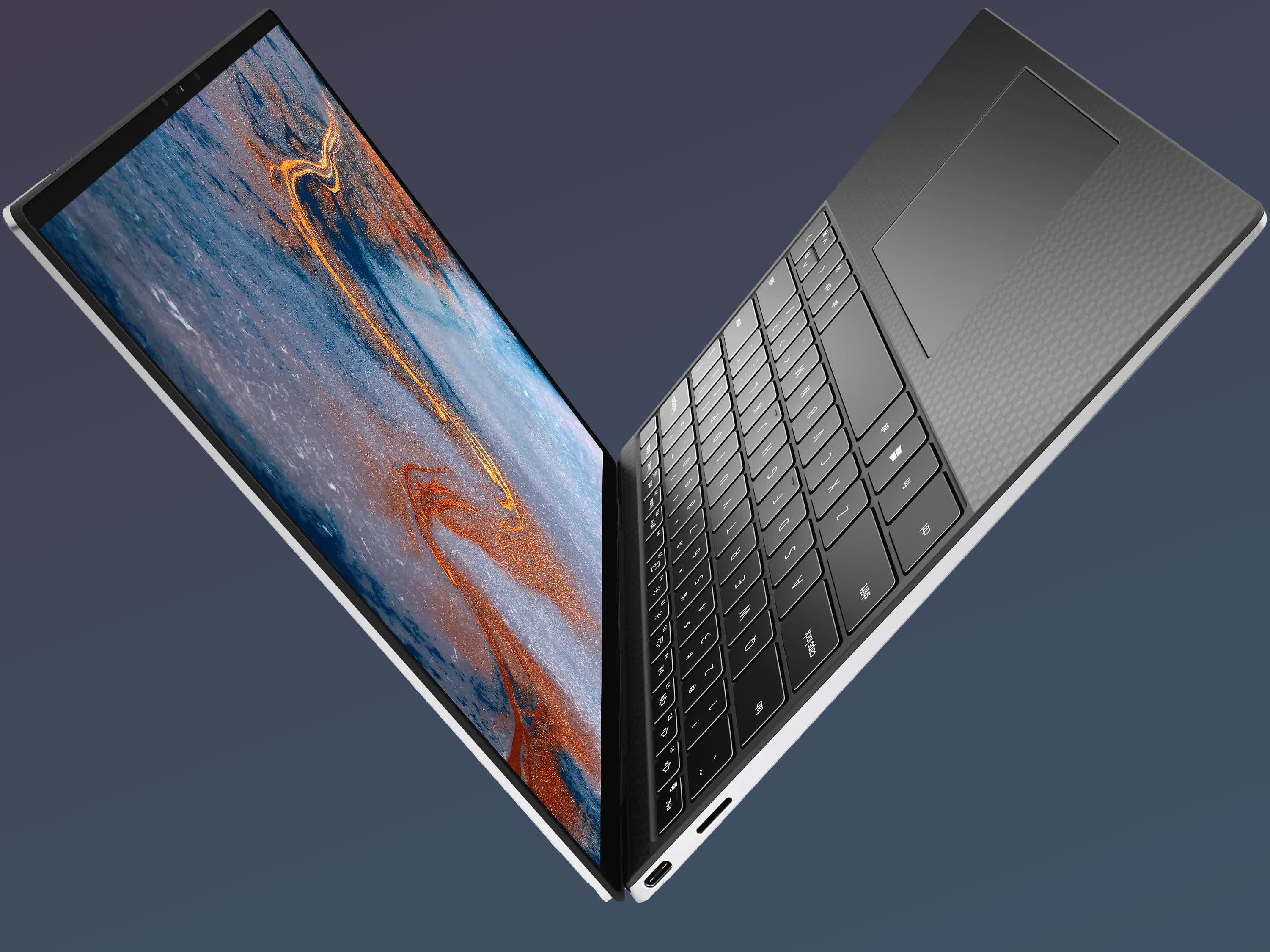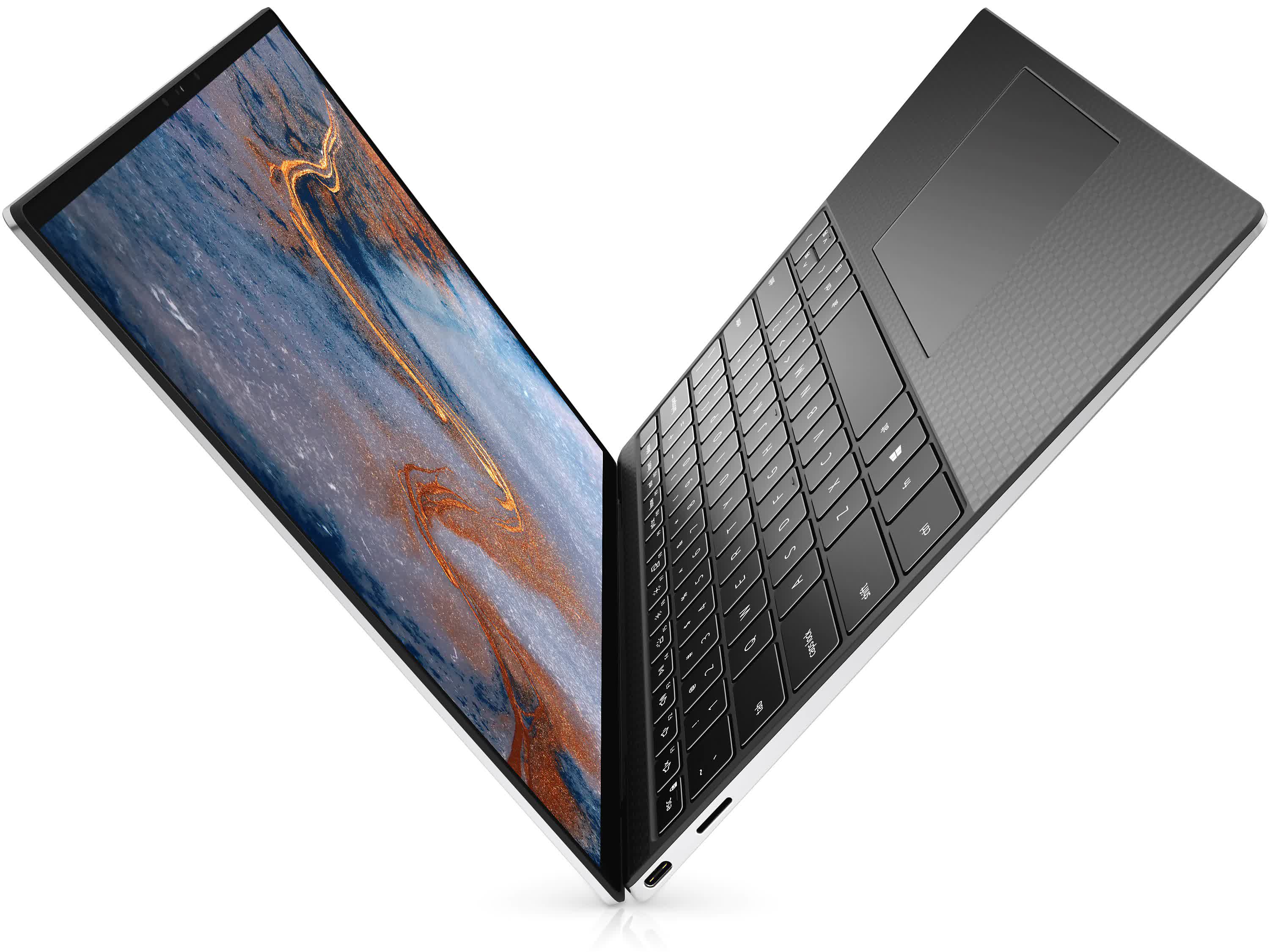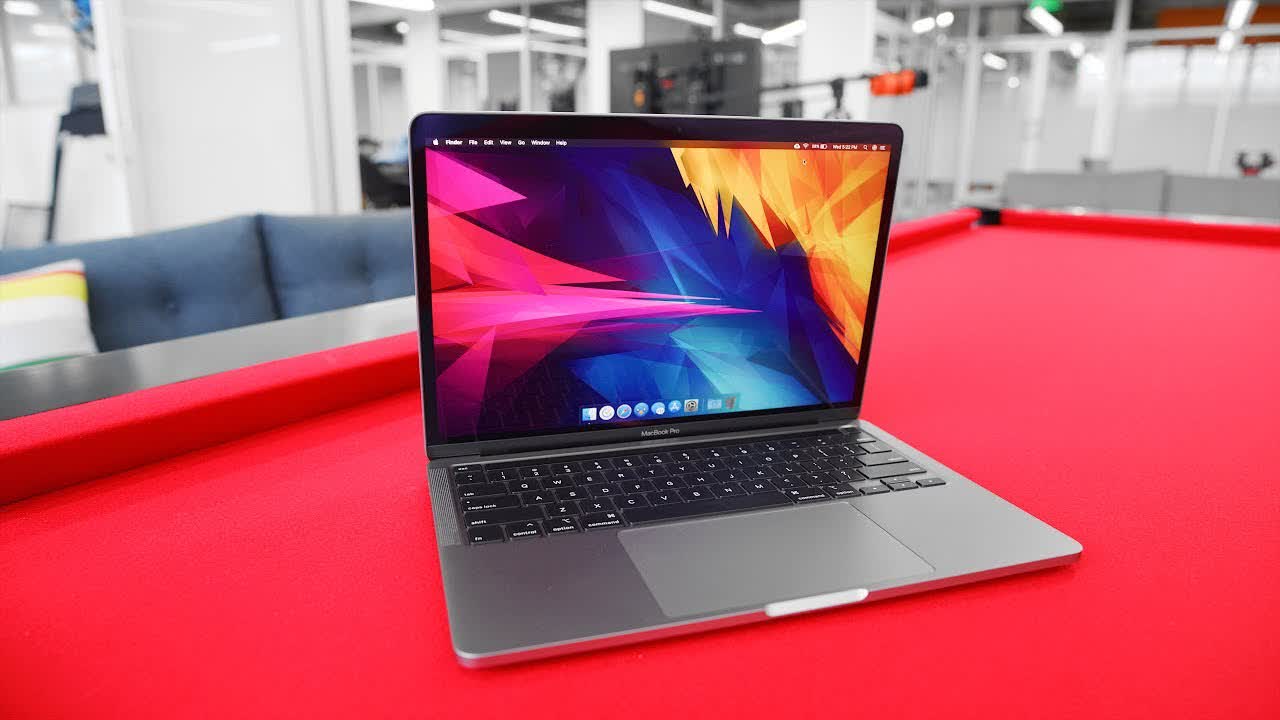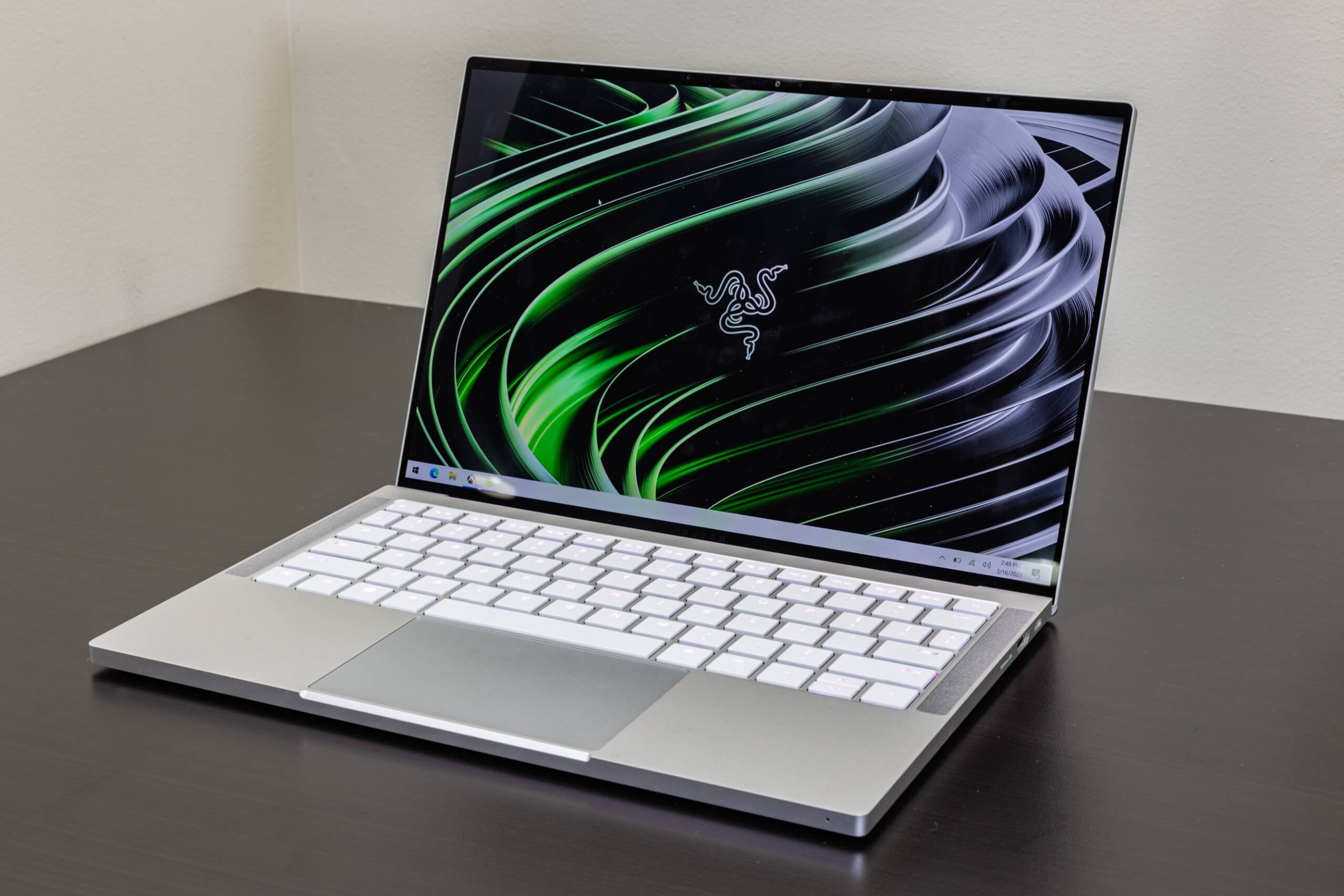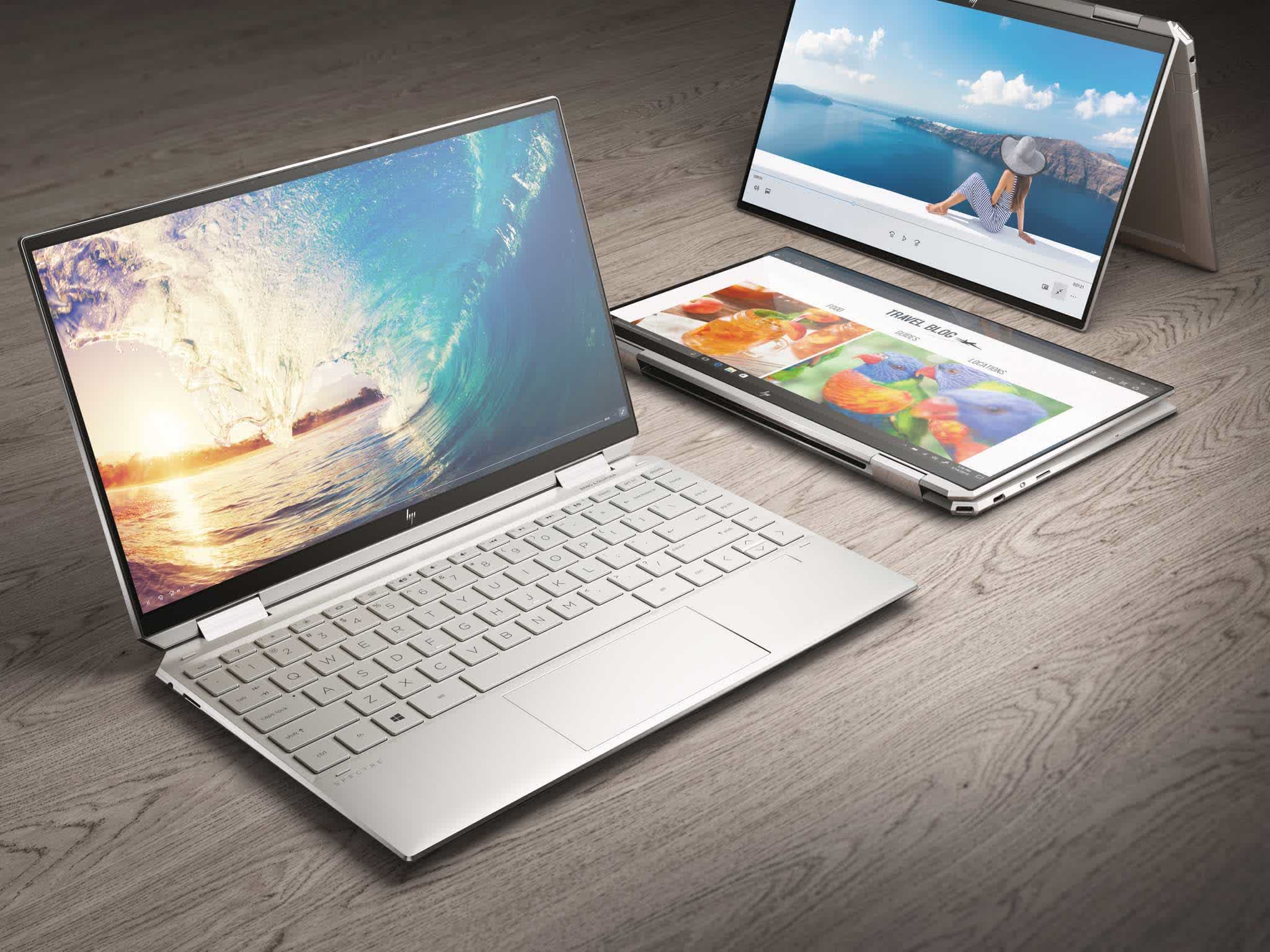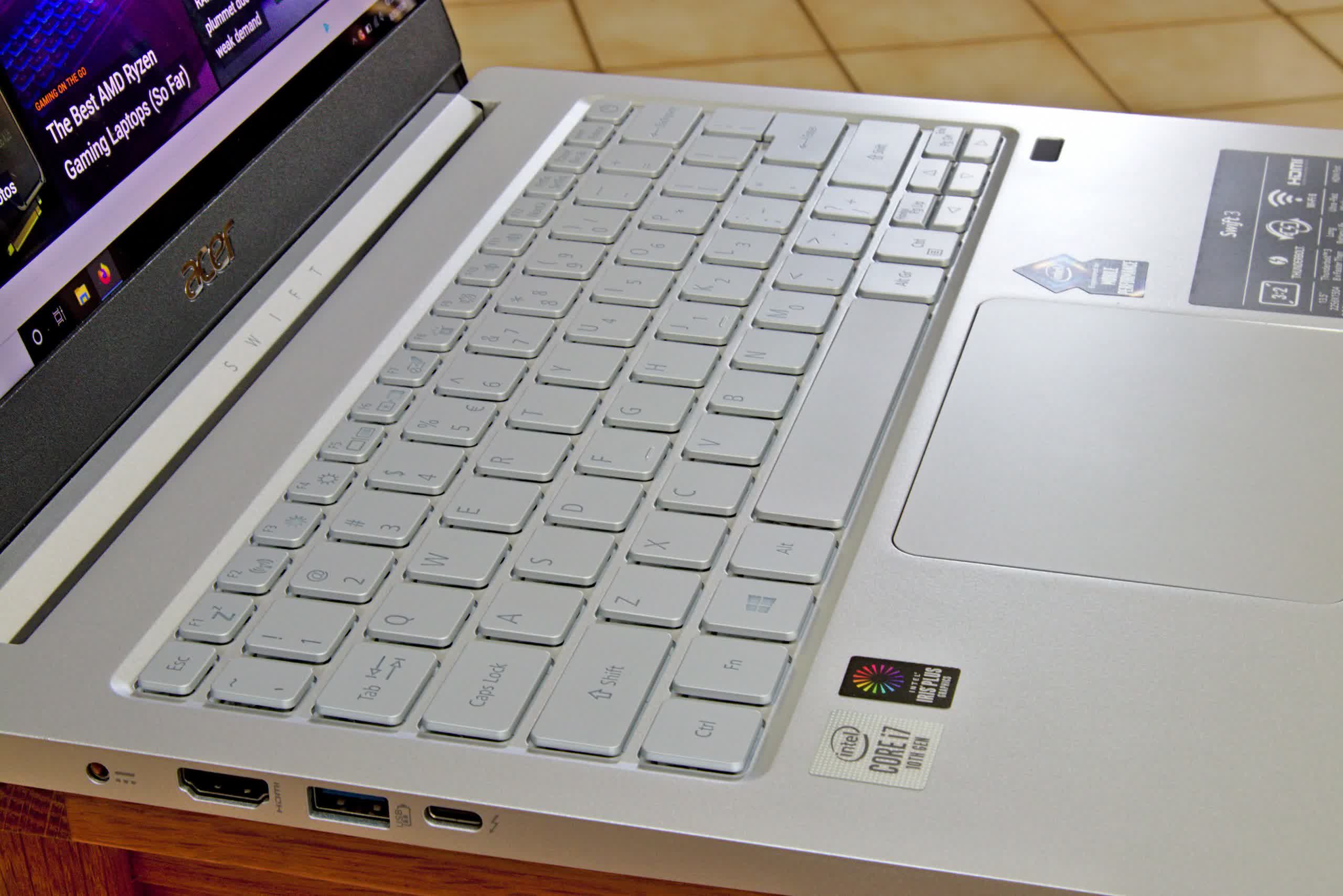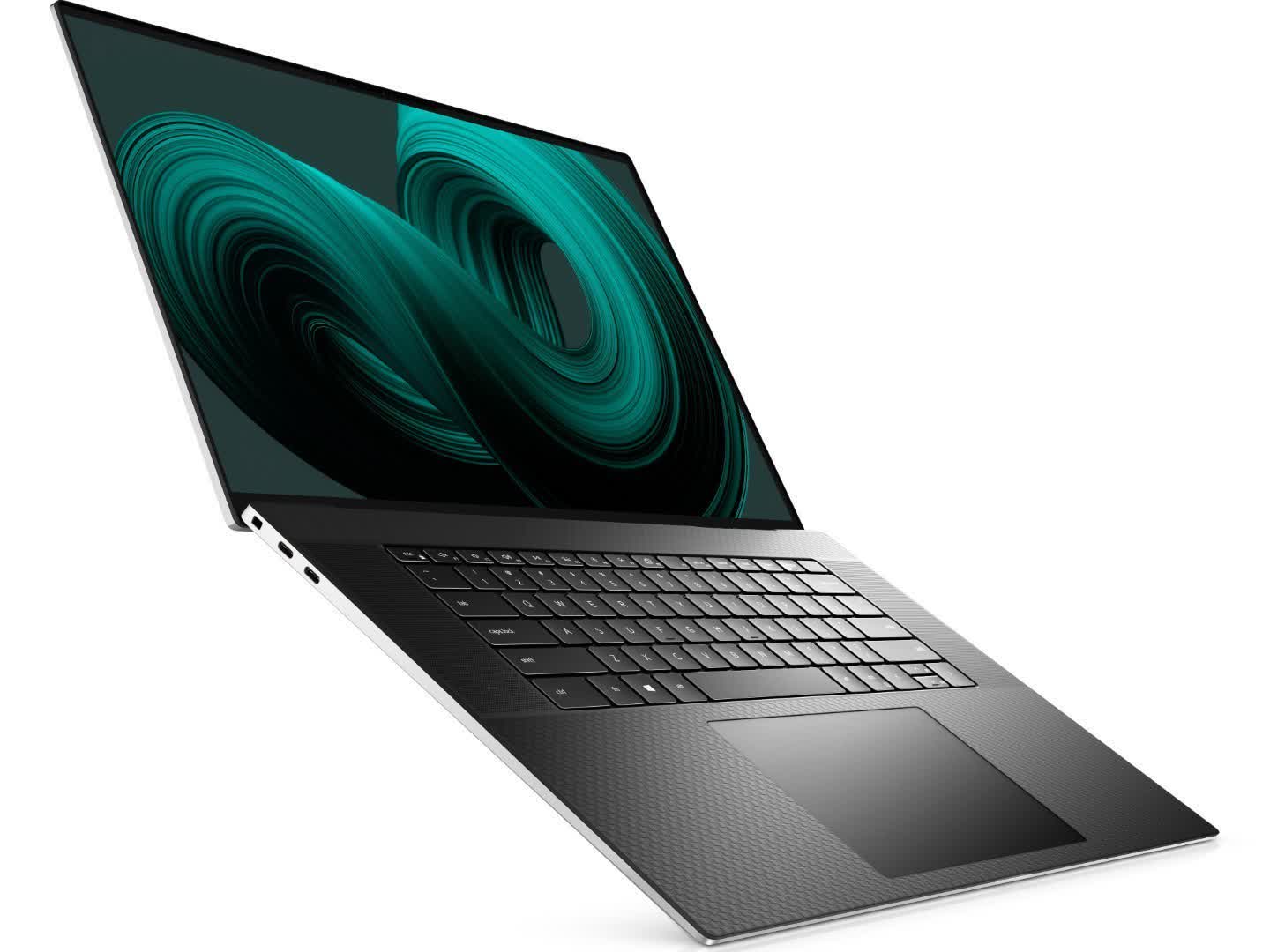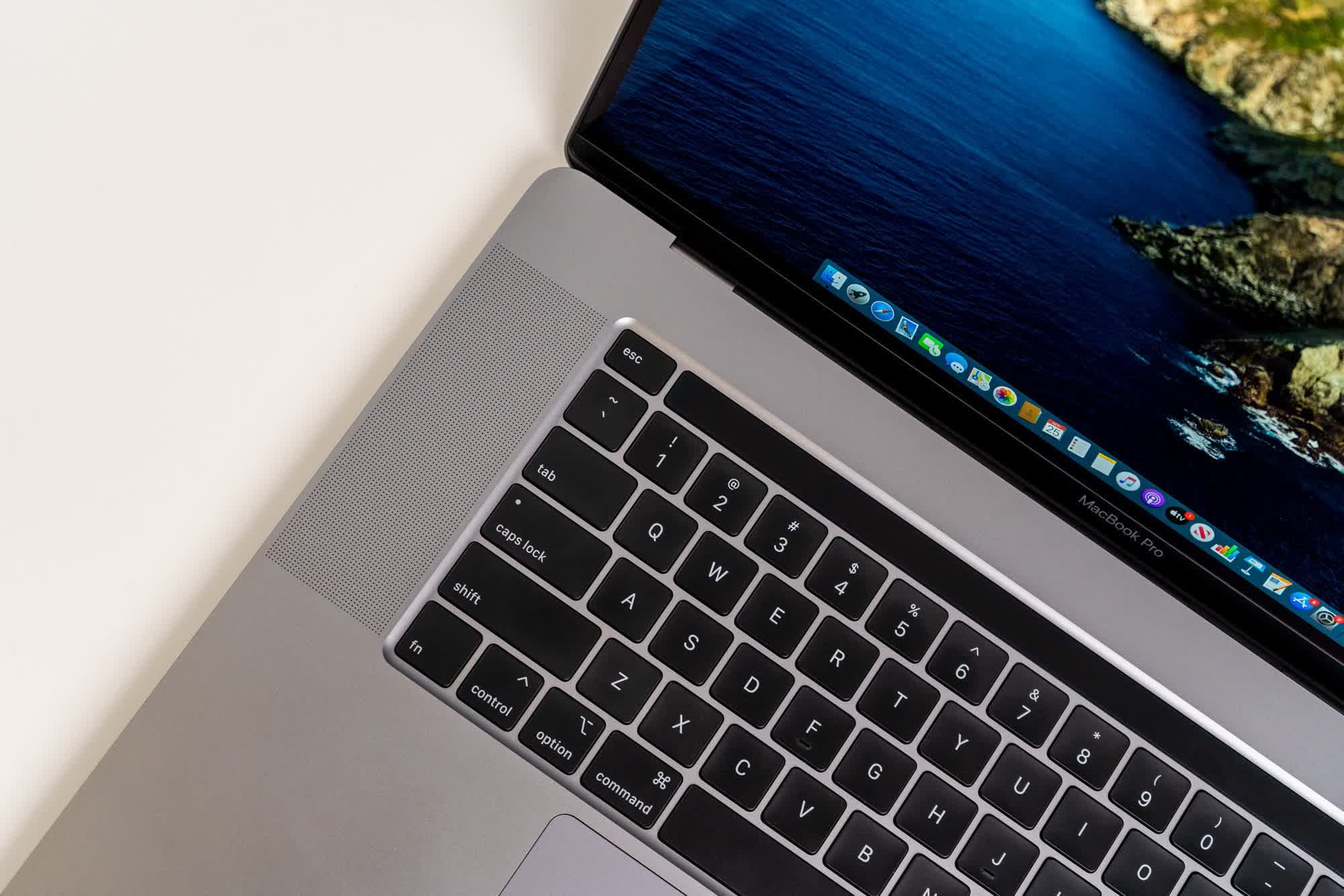See our latest update to this buying guide: The Best Laptops
If you want a laptop for something other than just gaming – check out those beauties here – there are a slew of options: desktop-rivaling powerhouses, 2-in-1s, MacBooks, value-conscious machines, and much more. It can be a bit overwhelming, so here's a handy guide to help you out.
Along with several new entries, our latest update to this guide sees some previous favorites upgraded with extra features and the latest hardware from Intel, AMD, Apple, and Nvidia. We also have dedicated guides for gaming laptops and Chromebooks with a larger variety of models and price points.
- Best Ultraportable
- Best 2-in-1
- Best Budget
- Best Productivity
- Best Gaming Laptop
- Best Convertible
- Best Chromebook
Best Ultraportable Laptop
Dell XPS 13 9310 - Late 2020
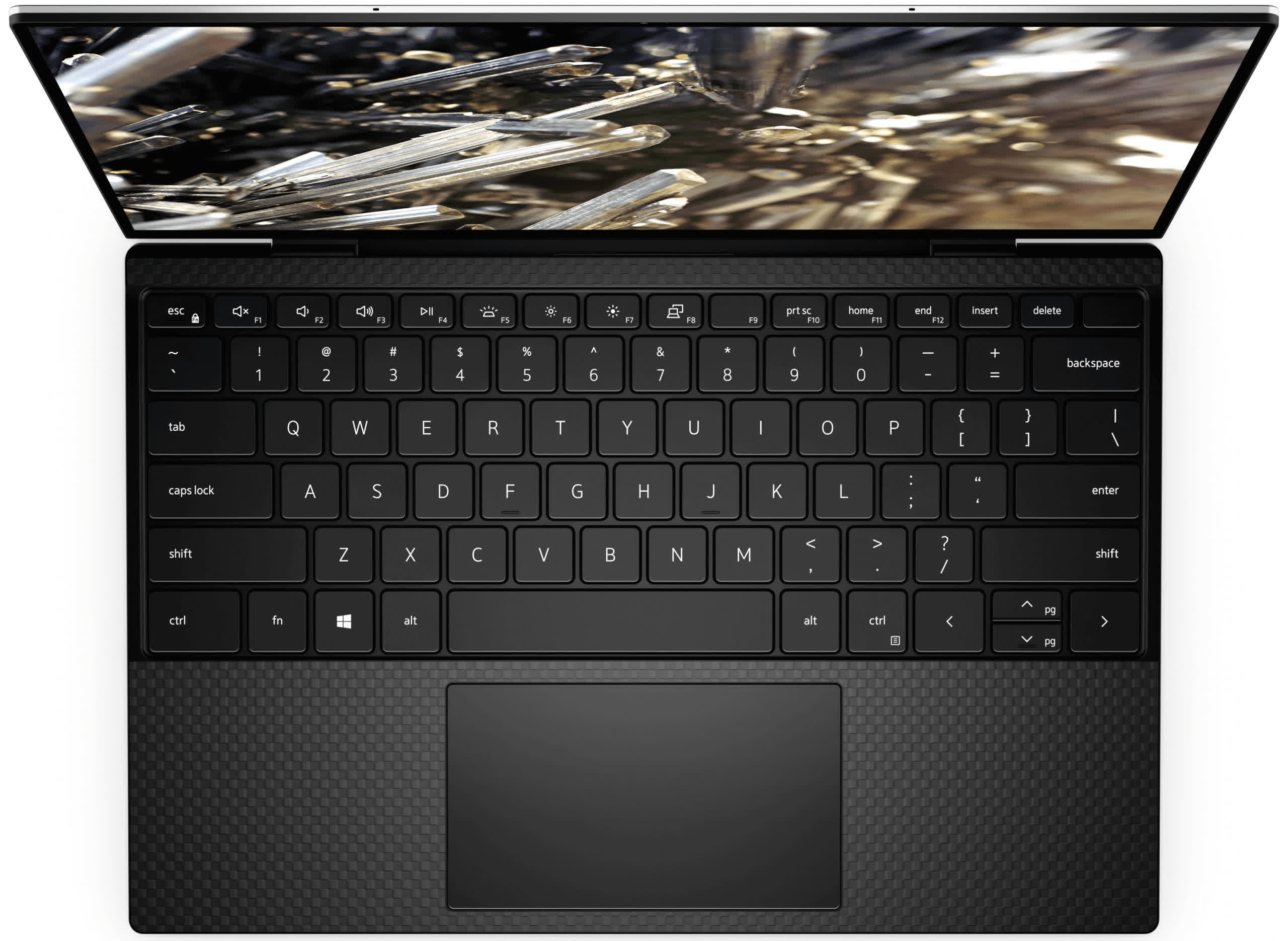
The Dell XPS 13 has once again taken the top spot in this category, alongside Apple's MacBook Pro 13 M1 which is a great performer and the ultraportable to have if you live in Apple's ecosystem.
The XPS 13 has long been regarded as the one to beat in the Windows world, and the most recent version improves on an already great machine. The build quality of the XPS 13's sturdy chassis is one of its best features. It weighs 2.8 pounds, the same as the HP Spectre x360 (our best 2-in-1), and typing is a joy, thanks to the satisfying feedback, soft-touch coating, and edge-to-edge keyboard. The latest Dell XPS 13 has thinner bezels (91.5% screen-to-body) than earlier versions, as well as a four-sided 16:10 Infinity Edge display that's great for productivity. It's also incredibly bright, reaching close to 500 nits, and can be spec'ed up to 4K with touch capabilities.
Battery life is another highlight, allowing you to surf the web for around 12 hours---expect less if you opt for the 4K screen, though. There's also a Windows Hello-compatible webcam in those tiny bezels, a fingerprint reader, Thunderbolt 4, and Wi-Fi 6.
The latest XPS 13 machines get a performance boost from 11th-gen Tiger Lake Intel processors with Iris Xe graphics. There are plenty of options available, including the Core i7-1185G7 with 16GB of RAM and a 512GB M.2. SSD for $1,349. But if you want something really special, the gorgeous 3.5K OLED touchscreen model is $1,649.99.
Connectivity-wise, there are two Thunderbolt 4 USB-C ports, a MicroSD slot, and a 3.5mm audio jack---but no USB Type-A, though Dell does include a Type-A to Type-C adapter in the box. There are few negatives with the XPS 13. Port selection is a bit limited, and some parts can get toasty at times, but it remains at the top of the pile alongside the HP Spectre x360 (more on that one below).
The Apple alternative
MacBook Pro 13 M1
The MacBook Pro 13 M1 ($1,099 and up) does not come with an abundance of design improvements and new features compared to its predecessor – in fact, it's bound for an update as soon as late 2021 – but it does carry one important new addition: the 5nm M1 processor. This Arm-based M1 chip with its 8-core CPU, 8-core GPU, and 16-core Neural Engine offers a combination of performance and endurance that the majority of Windows laptops can't match. A fact reflected in the number of anti-MacBook ads Intel is putting out. We have used it extensively, and pretty darn good... and efficient.
The MacBook Pro 13 base model offers 8GB of RAM, a 256GB SSD, and a 13.3-inch 2560 x 1600 (227 PPI) screen, with support for the P3 wide color gamut. Ports are limited to two just Thunderbolt 3 ports and an audio jack. Elsewhere, there's the scissor mechanism Magic Keyboard, great sound, a decent webcam, Touch ID, the shortcut-packed Touch Bar, and Wi-Fi 6. You can also run iPhone and iPad apps natively on macOS.
The usual Apple caveats apply: it helps if you're a fan of the company and its ecosystem, there aren't as many games on macOS, there's no touchscreen, and colors are limited to silver and gray. But with a battery that can last more than 16 hours, a very solid build, and efficient hardware that barely gets hot under load, the MacBook Pro 13 is a fantastic option for professionals, especially those on the move. It starts at $1,099.
Another great Windows machine
Razer Book 13
From a company better known for its gaming machines, the Razer Book 13 is being hailed as a productivity-focused rival to the Dell XPS 13 and MacBook Pro 13. It features a 16:10 display, thin bezels, a great keyboard with per-key RGB, touch display, 4K option, and 11th gen Intel CPU.
If thinness and portability are big concerns for you, the Razer Book 13 might not be it. However, if you're fine sacrificing some of that for big performance gains and solid build quality, you'll be very happy with the Book 13. Read our full review here. It starts at $1,199.
Best 2-in-1 Ultraportable
HP Spectre x360 13 - 2021
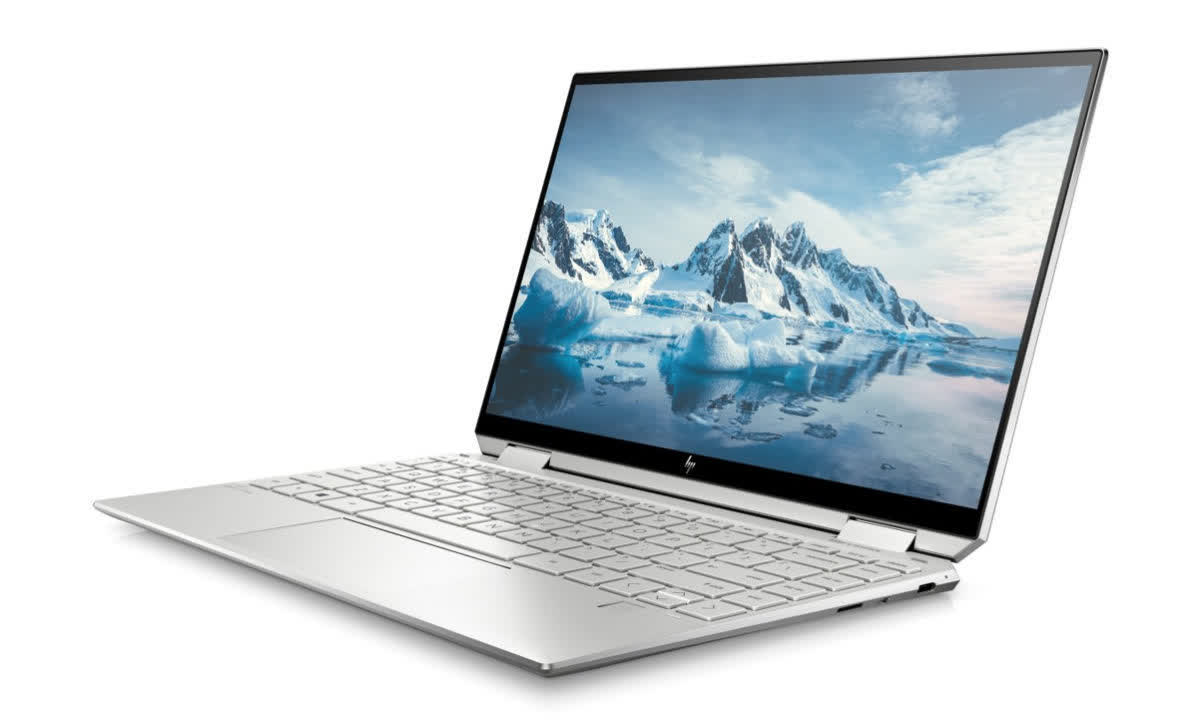
There's plenty to love about the most recent HP Spectre x360 13, beginning with the gorgeous 4K OLED touchscreen option that makes colors look bright and vibrant; it's a noticeable improvement over IPS screens. There's also the excellent build quality, with a brushed metal finish and 360-degree hinge that allows it to switch between laptop and tablet modes. The whole device weighs only 2.8 pounds, making it easy to haul around in a backpack.
The $1,349 OLED model comes with Intel's 11th-gen Core i7 -1165G7 paired with Iris Plus integrated graphics, 16GB of RAM (DDR4-3200), 512GB SSD, and 32GB of Intel high-speed Optane storage, and you've got a laptop that can handle everyday tasks with ease, as well as creativity apps such as Photoshop. It's also got astounding battery life.
For those on a tighter budget, the 1080p Spectre x360 13 with a Core i5-1135G7, 256GB storage, and 8GB RAM is just $899. You even get an HP Rechargeable Tilt Pen thrown in. Elsewhere, you'll find Windows Hello facial recognition, a webcam kill switch, fingerprint sensor for secure logins, Wi-Fi 6, and a privacy screen (some models). There are also plenty of connectivity options for an ultraportable: two Thunderbolt 4 USB-C ports, a MicroSD slot, a 3.5mm audio jack, and, unlike its Dell XPS 13 rival, a USB-A 3.1 port.
A possible downside could be the 16:9 display, rather than the more productivity-friendly 16:10 screen used in rival laptops. Nevertheless, the Spectre x360 13's numerous plus points make it a top pick.
If you want something a little larger and with a 3:2 display, there's this laptop's bigger brother, the Spectre X360 14. The base model has a 1920 x 1280 screen, and there are 1,000 nit and OLED 3K2K options. Prices start at $1,169 for the Core i5-1135G7 and reach $1,399 for the Core i7-1165G7.
Best Budget Laptop
Acer Swift 3

Finding a laptop for a budget price that isn't a potato is no easy task. But Acer's Swift 3 offers an 8-core Ryzen 4700U with 8GB of RAM and 512GB of storage in a 13.5-inch laptop for just $620.
We're big fans of the Acer Swift 3. It scored 85 in last year's review, where we singled out the 2.62-pound aluminum chassis, which is lighter than a Dell XPS 13. It also comes with a bright Full HD IPS display, which can be upgraded to 2256 x 1504 for a little extra, and features a fingerprint scanner along with a backlit keyboard---not a combo you often find at this price point.
The Swift 3 also has an impressive array of ports for a budget machine: USB 3.2 Gen2 Type-C with DisplayPort & Power Delivery, USB 3.2 Gen 1, USB 2.0, and an HDMI. There's even Thunderbolt if you opt for an Intel CPU. Elsewhere, Acer's machine boasts Wi-Fi 6, a 720p webcam, and a claimed 11.5 hours of battery life.
The Swift 3 does pack a fair bit of bloatware, but that's one of the few drawbacks of a great budget model ideal for students and more casual users. It's available in many configurations, but we definitely recommend the Ryzen 4700U build for its price vs. performance ratio.
A wallet-friendly OLED option
Asus Zenbook 13 OLED
A budget OLED laptop? It's true. Zenbooks have long been favored by professionals on a budget for their business-centric features, and this ZenBook 13 is no different. It packs several security options, sleek looks, an impressive webcam, and a very light and thin body.
Hardware-wise, to keep it within a budget we like the models equipped with the Core i5 1135G7 or Ryzen 5 5500U that come with 8GB of RAM and 256GB NVMe SSDs. The Zenbook's usual trackpad doubles as a numpad, you also get an IR webcam with Windows Hello, HDMI 2.0b, USB 3.2 Type-C, and a microSD card reader.
It also comes with the ErgoLift hinge, good speakers, and excellent battery life. Plus, that OLED screen is fantastic. At $749 and above, this might push the boundaries of "budget," but it's worth spending a little extra for something this nice.
Best Productivity Powerhouse
Dell XPS 17 9710 - 2021
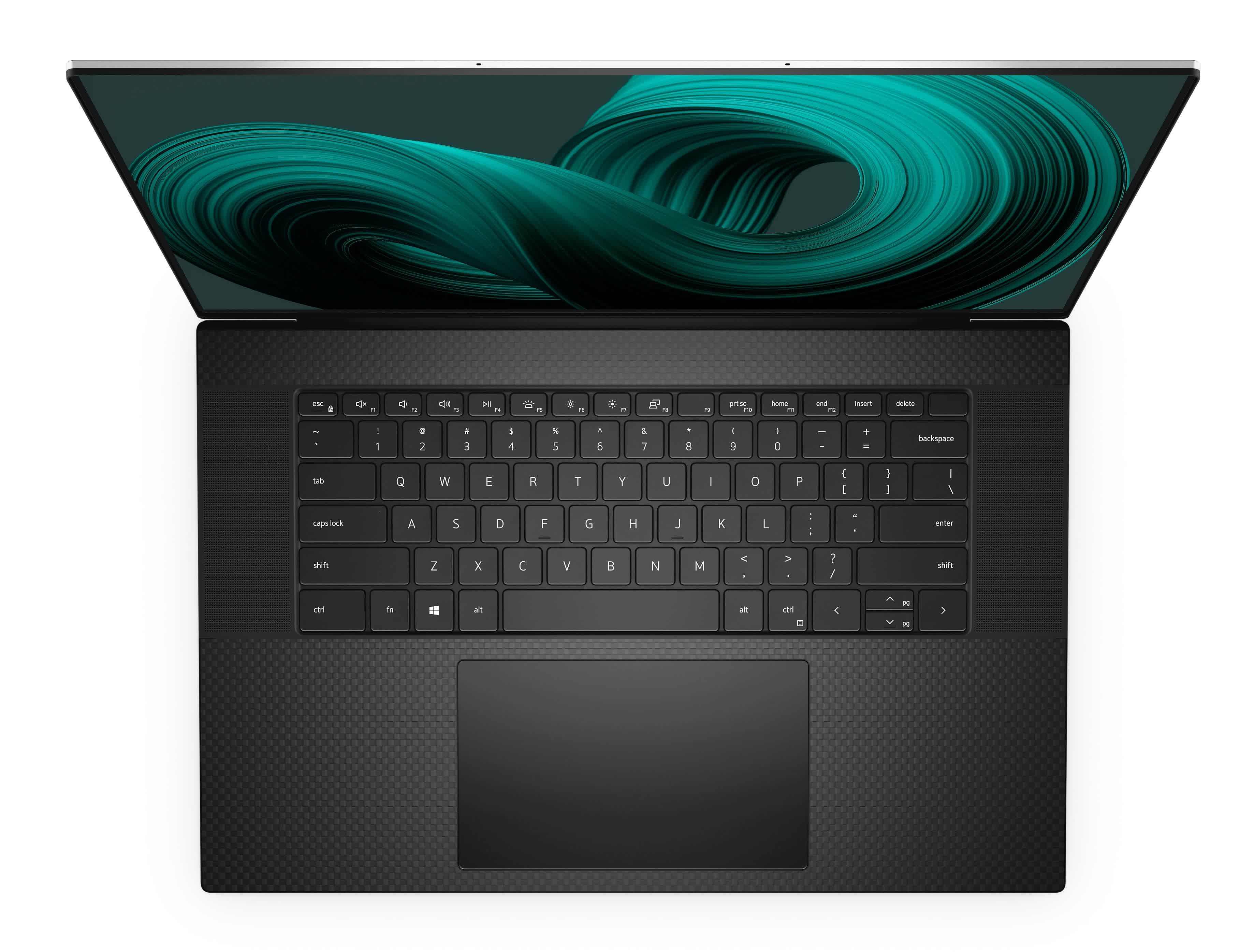
Dell checks all the right boxes with the XPS 17: fast performance, lovely keyboard, gorgeous and massive display, and excellent audio all packed into a stunning body. It can be equipped with the latest 11th-gen Core i9 CPU from Intel and an RTX 3060, making it a capable gaming machine, too. The 2021 models can range from an i5-11400H and 8GB RAM ($1,549), up to a Core i9-11980HK. You can also add up to 64GB of RAM, a 2TB PCIe SSD, and that RTX 3060 (70W), which would cost $3,849 with the touchscreen.
But when you buy a laptop like the XPS 17, you're not buying it for the specs alone. The big 17-inch display is meant for creative work and productivity. The XPS now uses a 16:10 ratio in either full HD+ non-touch or 3840 x 2400 touch options, the latter reaching 500 nits, rated for DisplayHDR 400, and covering 100 percent of the Adobe RGB spectrum and 94 percent of the DCI-P3 color gamut.
Buyers also get amazing thermal performance thanks to the vapor chamber cooling system. Taking a leaf from Apple, it's entirely USB-C; it has four, all supporting Thunderbolt 4, though Dell does include a USB-C to USB-A 3.0 and HDMI 2.0 dongle in the box if you need it. There's also a full-sized UHS-III compliant SD card reader, Wi-Fi 6 and Bluetooth 5.1, and 2x2 MIMO antenna configuration.
Despite the 17-inch screen, XPS 17's footprint and weight make it feel closer to a 15-inch laptop. It features Windows Hello, a CNC-machined aluminum chassis, clean edges, and soft-touch carbon fiber palm rests that scream quality. Moreover, the quad-speaker arrangement beneath two upward-facing speaker grilles offers some of the best audio you'll find in any laptop.
Things can get expensive when you spec it with high-end hardware, and not everyone loves the trackpad and the lack of anything other than USB Type-C, but this is an unbeatable Windows machine for tasks such as video editing on the move.
Apple's classic favorite
MacBook Pro 16
Image credit: Digital Trends
Editor's note: The MacBook Pro 16 remains Apple's top mobile workstation but we don't recommend buying one now. It's long due for an upgrade to Apple Silicon (M1 or M2 SoC) which will result in much better performance and thermals.
Apple isn't whom you turn to for a bargain. But if you're a fan of the company's products and want one of the best productivity laptops out there, check out the MacBook Pro 16. Aimed squarely at professionals means plenty of power and storage. The MacBook Pro 16 can be configured with 9th-gen Core i7 and Core i9 CPUs, up to 64GB of RAM, Radeon Pro 5600M graphics, and reaches 8 TB of SSD storage. Worryingly for your wallet, it starts at $2,399 and can hit a massive $6,699.
Compared to previous models, the Pro 16 addresses the problematic butterfly keyboard by returning to a much-improved scissor mechanism. The Esc key also returns, while the Touch ID key is no longer integrated into the Touch Bar. What's especially appealing in this model is the display. Even though the screen size has gone up from 15.4 inches to 16 inches, the smaller bezels mean the overall footprint remains the same. The 16:10 aspect ratio display is not quite 4K, but the 3,072 x 1,920 picture (226 PPI) looks stunning and can reach 500 nits. Pros will also appreciate the 100 percent sRGB and 84 percent Adobe RGB coverage.
Like Dell's XPS 17, ports are limited to four USB Type-C (all Thunderbolt 3), which some people might not like. There's no Wi-Fi 6, and the battery is unlikely to last the 11 hours Apple claims, especially when using pro apps.
Despite the few drawbacks (and that price), usually there's not much that can challenge the large MacBook Pro, except for an imminent overhaul to its internals, so if you're into Apple laptops and run pro-level creativity tasks on macOS, you are surely waiting for the new and improved model that is rumored to feature a mini-LED display, updated MagSafe and HDMI. It could also see the Touch Bar replaced with a set of physical keys, but most importantly it will run faster and more efficient Apple Silicon.
MacBooks also tend to conserve their value over time, more than any Windows laptop by far.
Also worth looking
Microsoft Surface Laptop 4
Microsoft certainly can't be accused of changing the Surface Laptop's design much over its four iterations, but the company probably thinks if it isn't broke, why fix it? You know what you're getting with the latest version of its machine: a best-in-class keyboard, brilliant battery life, a great 3:2 display, and excellent performance from both Intel's and AMD's processors.

Microsoft has long imitated Apple's minimalist design with the Surface Laptop, using sleek, clean lines on the aluminum chassis with its luxurious build quality. It's also remarkably light for a sturdy 15-inch machine, weighing 3.5-pounds, less than rivals like the XPS 15 (4.5 pounds).
The screen is another plus point. Microsoft has long known that 3:2 aspect ratios are great for productivity tasks. This 2496 x 1664 PixelSense touchscreen with Surface Pen support is bright, vibrant, and excellent for working on the move.
Internally, buyers get to pick team red or team blue. Sadly for AMD fans, the Ryzen option is limited to the Zen 2-era Ryzen 7 4980U Surface Edition (8 core/16 threads, 4.4GHz boost), rather than any of the Zen 3 Ryzen 5000 CPUs, but it's still a powerful processor. Alternatively, you can opt for an 11th-gen Intel Core i7-1185G7 (4 cores/8 threads, 4.8GHz boost) with its Iris Xe Graphics. Both of which offer plenty of performance.
With the Surface Laptop 4, Microsoft has turned one of its predecessor's worst elements, battery life, into one of the best. The company claims the 46.6Wh battery offers around 17.5 hours of use when paired with the Ryzen processor or 16.5 hours with the Intel option.
There's the choice of 8GB, 16GB or 32GB LPDDR4x RAM, 256GB, 512GB or 1TB replaceable SSDs, a Windows Hello 720p camera, Dolby Atoms speakers, 1 x USB Type C, 1 x USB Type A, a 3.5mm headphone jack, WiFi 6: 802.11ax, Bluetooth 5.0, and a big Precision trackpad. The big bezels, lack of Thunderbolt support, and SSDs that could be faster are disappointing. It's also a little pricey: the AMD version starts at $1,299.99, while the Intel option is $1,499. Overall, though, the Surface Laptop 4 is a great productivity machine
Best Gaming Laptop
Asus ROG Zephyrus G15 - 2021

To choose a gaming laptop that often means making compromises: huge power at the cost of a heavy chassis; great specs let down by a poor battery life; a monstrous gaming machine with a price to match. With the Asus ROG Zephyrus G15, however, the good parts come without the bad.
The G15 can be specced with the top two mobile GPUs available right now, the RTX 3070 and RTX 3080, which get the most out of the 15.6" 1440p Pantone-validated screen (3ms, 300 nits) and 165Hz refresh rate. There's also a Ryzen 9 5900HS processor, 16GB of DDR4-3200 RAM, and 1TB of storage that can be upgraded up to 48GB and 2TB SSD.
Measuring 20.32mm thick and weighing 4.19lbs, the Zephyrus G15 is thinner and lighter than many similar gaming laptops. One unique feature is the ErgoLift 180-degree hinge that raises the keyboard slightly off a surface when the lid is open, helping it stay cool (and look cool). There are also top-firing dual speakers alongside the keyboard and a dot-matrix design on the lid with a prismatic film for a shimmering effect.
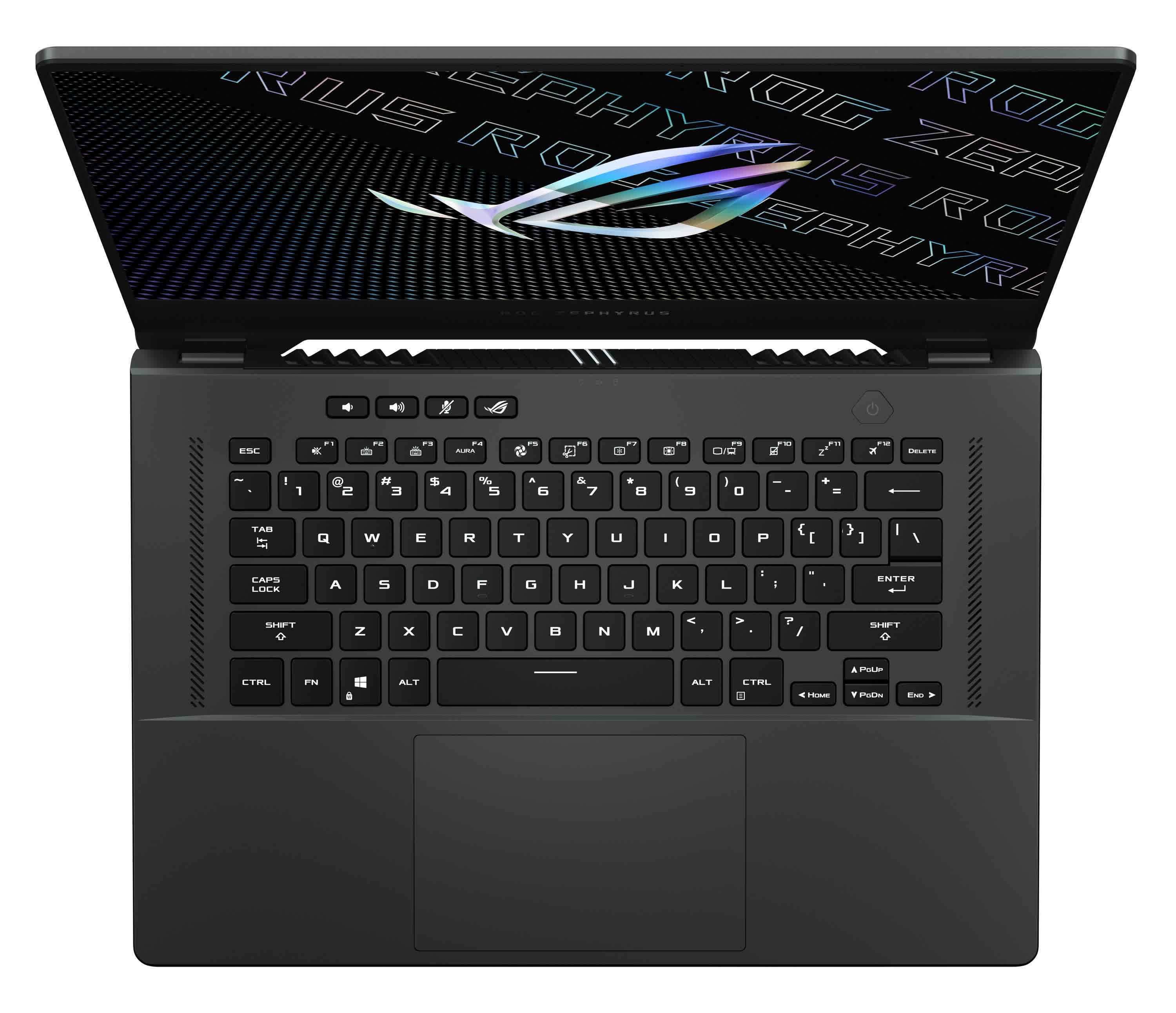
Elsewhere, the G15 boasts Wi-Fi 6 with Gig+, FreeSync, 100% DCI-P3 color coverage, and an excellent keyboard and trackpad. The 90Wh battery can last 8+ hours when not gaming, and you can charge it to 50% in 30 minutes using the 200-watt charger.
Port-wise, there are two USB 3.1 Gen 2 Type-C and two USB 3.1 Gen 2 Type-A inputs, microSD, an audio jack, an Ethernet RJ45 port, a Kensington-style lock port, and HDMI 2.0b, which ticks most boxes.
The Zephyrus G15 base model normally starts at $1,499, but the state of the current market means you may struggle to find one at that price---though it's still cheaper than most competitors. The only real drawbacks are the lack of a webcam and the fact that it can get pretty toasty under heavy loads.
If you want something bigger and have cash to spare, there's the Razer Blade Pro 17, which maxes out at an RTX 3080 and comes with similar screen options.
A more expensive alternative
Razer Blade 15 Advanced
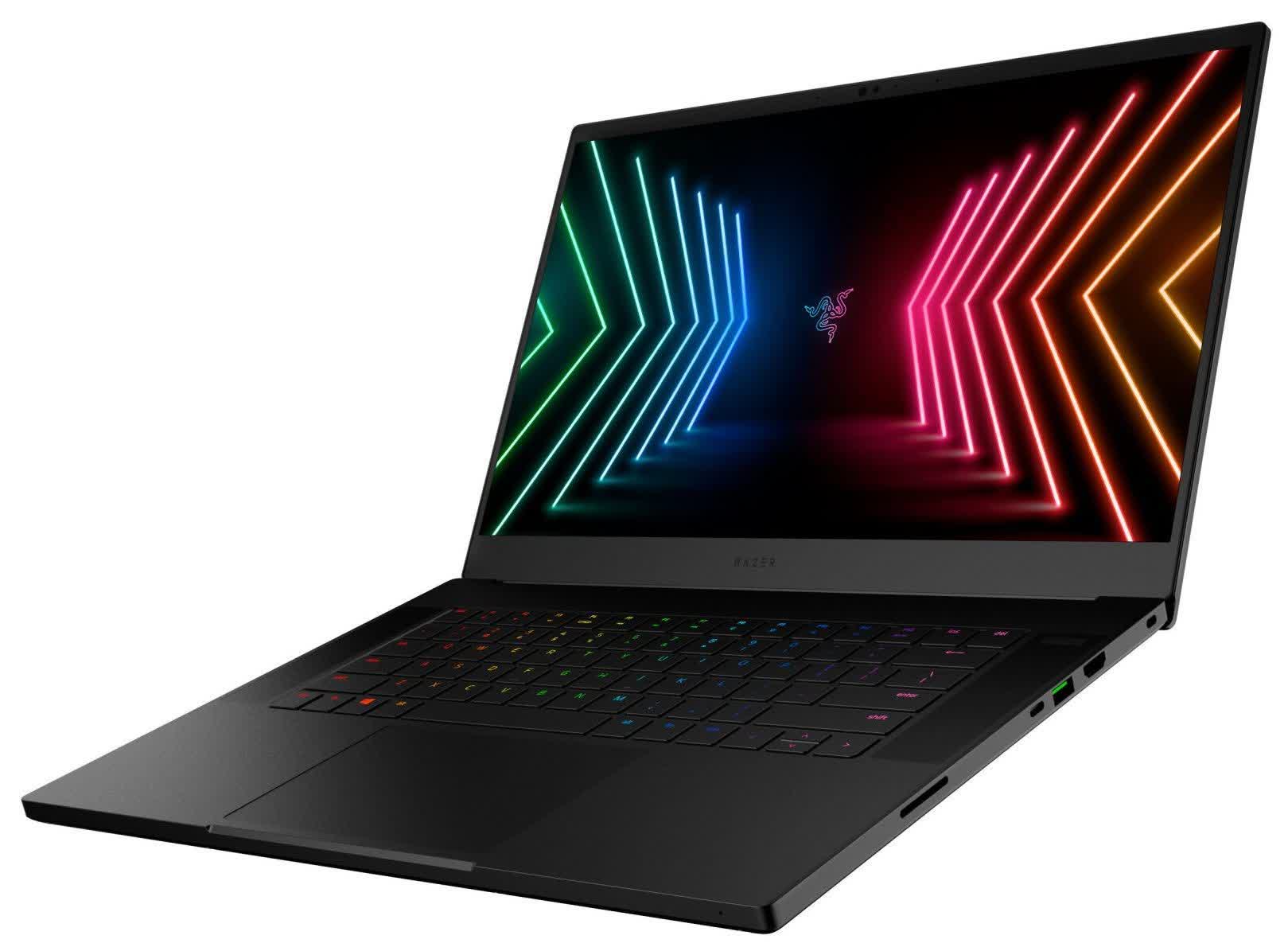
You can always rely on Razer's Blade laptops for high-quality builds, lightweight designs, and top specs, and the latest iteration of the Blade 15 Advanced Edition is no different.
At 15.8mm, Razer says the Blade 15 Advanced is the world's thinnest 15-inch laptop with RTX graphics, though models with specs higher than the RTX 3060 are slightly thicker. You can max out this device with a Core i9-11900H (2.5GHz base clock, 4.9GHz boost clock) and an RTX 3080 GPU, enough to push the pixels around its variety of screen options: 360Hz@FHD, 240Hz@QHD, and a 60Hz@4K OLED touchscreen.
As per usual, the Blade's sleek, black brushed-metal chassis looks and feels gorgeous, despite being a fingerprint magnet. There is a slew of ports, including two USB Type-C with Thunderbolt support, a 1TB NVMe M.2 SSD that supports PCIe 4.0, and up to 32GB of RAM (all models have upgradeable storage and RAM). And don't forget the top-firing speakers, vapor chamber cooling, a UHS-III SD card reader, and a Windows Hello-compatible IR webcam.
The Blade 15 can't match the battery life of the Zephyrus, but it's still decent for a gaming laptop. Razer's offering is a lot more expensive; the starting model has a $2,299 MSRP, and the high-end option hits $3,399.
Best Convertible Laptop
Microsoft Surface Book 3 15"
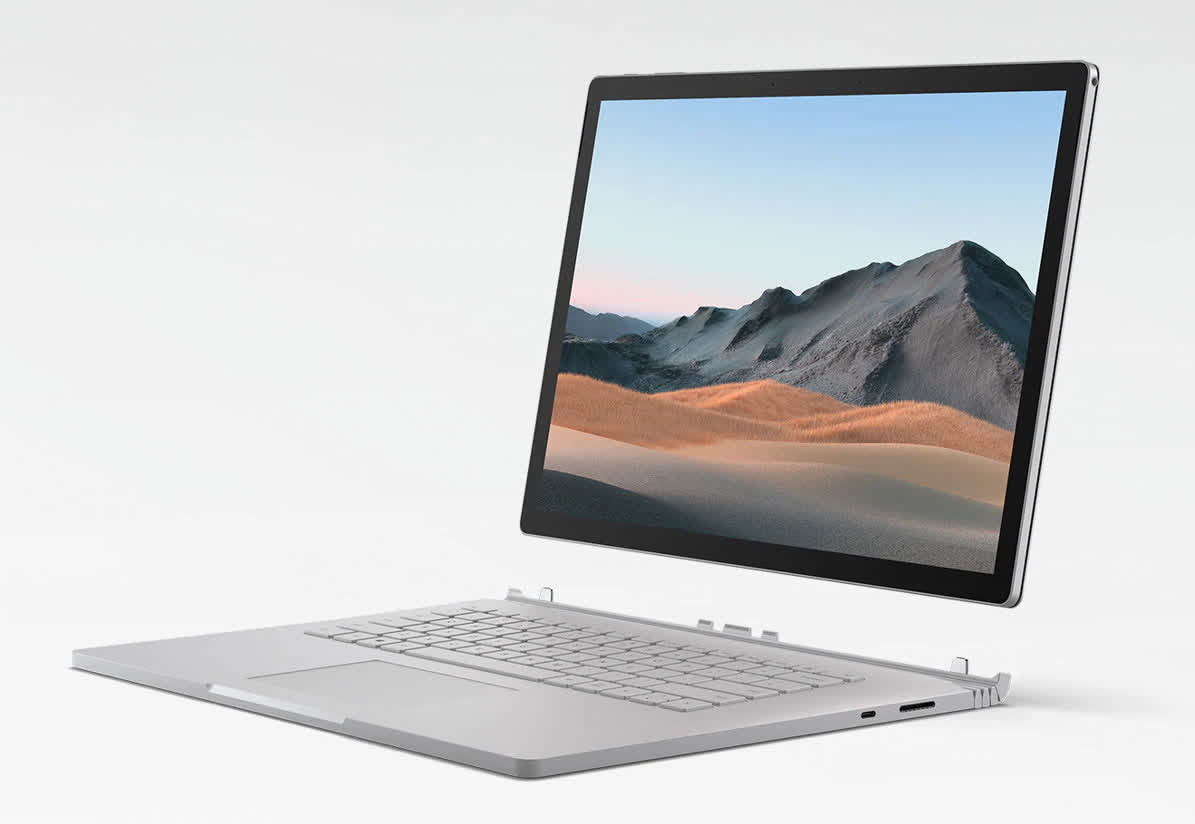
The third-generation Surface Book does not introduce any major design changes, but, as with the Surface Laptop, Microsoft has stuck with what works. The 2-in-1 still oozes quality, from the sturdy magnesium chassis to its beautiful display. Previous Surface Book users will be familiar with the dynamic fulcrum hinge that keeps the screen in place no matter how it's angled. You can also turn the detachable display around 180 degrees to use it for presentations or watching movies, and it even has a tent mode.
Obligatory side note: The fact that the Surface Book 3 has not received any major updates on its exterior or build does mean you can buy the previous-gen Surface Book 2 at a healthy discount. If you're convinced this is the format of laptop/convertible you want, there are new models going for $969 and up for the 13" version.
The Surface Book's PixelSense touchscreen is gorgeous. Whether you choose the 3,000 x 2,000 13.5-inch model or 3,240 x 2,160 15-inch version, both are fantastic for work and play, and the 3:2 aspect ratio is excellent for productivity tasks. With the touch of a button, the display pops off, turning the book into a tablet that's great for content consumption and surfing. The keyboard is another standout feature; it's an absolute joy to type on and up there with the best laptop keyboards---comfy and satisfying.
The latest version of the Surface Book moves to 10th-gen Intel CPUs (Core i7-1065G7), while the graphics options consist of a GTX 1650, 1660 Ti Max-Q, or a Quadro RTX 3000 Max-Q. There's also up to 32GB of RAM, up to 2TB of PCIe SSD storage, and the camera, microphone, and battery life have been improved.
Connectivity-wise, you get two USB-A 3.1 Gen 2 ports, a USB Type-C, a headphone jack, and a full-size SDXC card reader. Still no Thunderbolt 3, which Microsoft says is because of "security concerns." Other features include Windows Hello and front-facing speakers with Dolby Atmos, Bluetooth 5, and Xbox Wireless built-in for easy pairing with an Xbox One controller.
On the negative side, it's a chunky, heavy machine, especially the 15-inch model. The lack of Thunderbolt is disappointing, and Windows in tablet form is far from great. Plus, it remains expensive, starting at $1,599 for the smaller laptop and $2,299 for its big brother. Given the cadence between releases, we don't expect to see the Surface Book 4 until 2022.
Best Chromebook
Acer Chromebook Spin 713

Great | Differentiating Features
Attractive, well-built body. 3:2 touchscreen. Up to 11th-gen Core i5, Iris Xe GPU
Good | Most Have It
Higher price than the average Chromebook
Average | Competitors May Be Better
Noisy fans
Those who want bleeding edge performance with the Chrome OS experience should check out the Acer Chromebook Spin 713, which is available with a variety of Intel processors including an 11th-gen Core i5 model that features an Iris Xe GPU. In fact, this is only Chromebook to be a part of the Intel Evo platform, which means that it managed to hit a set of standards set out by the chipmaker.
The Acer has something for everyone, the base Core i3 model starts at $499 with basic specs and an attractive 13.5-inch touchscreen in a 3:2 aspect ratio. It can be configured with more RAM and storage, up to the $699 11th-gen Core Tiger Lake model featuring 8GB RAM, a 256GB SSD and Thunderbolt 4. It seems to be among the most future-proof Chromebooks, with specs that'll last for the next few years.
It's not perfect though, as downsides to this 2-in-1 style Chromebook is that it isn't the most premium looking, and all that power needs cooling, which means fans and noise. However, battery life doesn't seem to suffer, with the Spin 713 sitting near the top of many publications battery-longevity tests. Additionally, the wide selection of configurations means that there are quite a few varieties and price points.
Google's Pixelbook Go is a solid alternative and among the nicer, more aesthetically pleasing Chromebooks you can buy right now, but the Pixelbook is usually a tad more expensive for the same specs.
